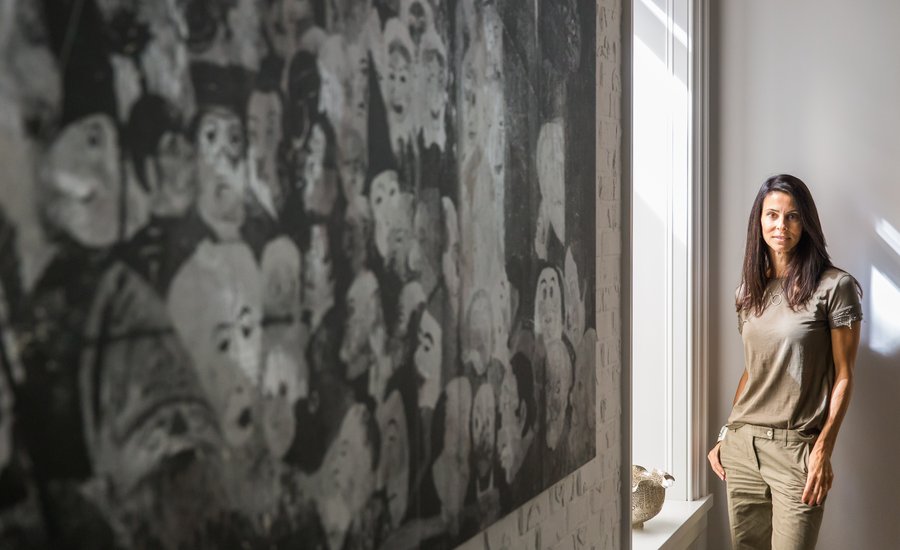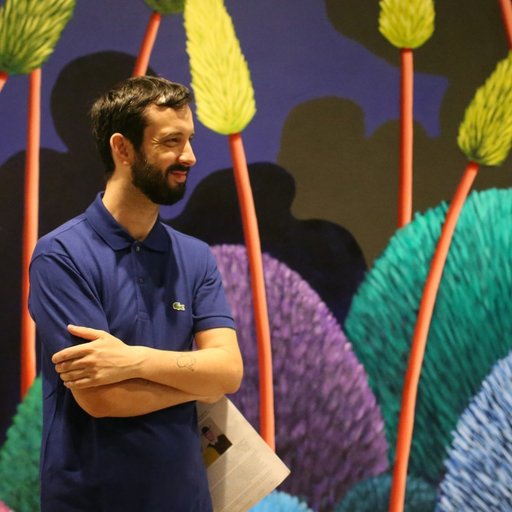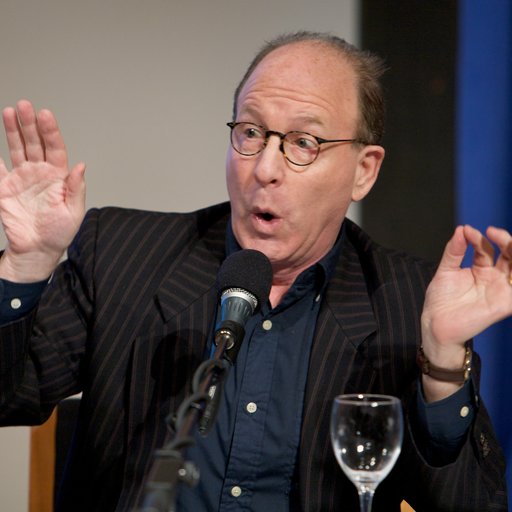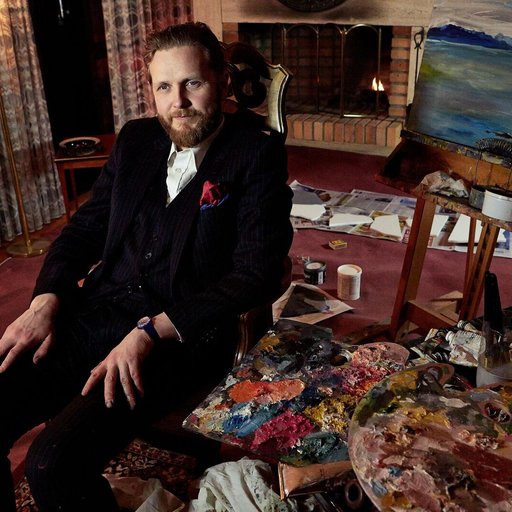Entering the art advisor Joyce Varvatos’s family home in New York’s Upper East Side—a stately, art-laden townhouse with a mini John Chamberlain on the windowsill and a Tracey Emin drawing peeking out from down the hall—it’s hard to believe that her career in the arts was anything but a lifelong goal. But the story is a bit more complicated.
Indeed, it was only after leaving her position at Proctor & Gamble in favor of a job at Art in America(and some secret nighttime art classes at NYU) that Varvatos started to find ways to turn her longtime love of fine art into a viable business. She first tried her hand as an independent curator as well as producing and directing (with Marcia Urbin) Off The Canvas, a 2005 documentary profiling nine of New York’s most important female dealers, including Paula Cooper, Marian Goodman, and the other doyennes of the Chelsea scene. Soon, however, it became clear that she needed more.
These days Varvatos spends her time as an advisor for collectors looking to jumpstart or expand their holdings, working closely with the allies she made during her early, exploratory years. Naturally, she also maintains her own collection of contemporary works, created with (some) input from her husband John Varvatos, the punk-lovingfashion designer behind the brand (and Artspace partner) that bears his name. (As revealed in our interview below, the pair sometimes have very different ideas of what constitutes a great artwork.)
Over the course of several conversations in her home and in the gallery of her longtime business associates at Lehmann Maupin, Varvatos opens up about the unique challenges (and joys) of her chosen profession and explains why an outsized passion for art is key to becoming a great advisor.
Let’s start at the beginning: how did you find yourself working as an art advisor in the first place?
I actually started out with Art in America, and it was kind of circuitous how I even got to that, because I have a finance background and an MBA. Eventually I realized I was on the wrong track. While I was figuring things out, I got a job at Art in America and immediately got the art bug.
I started studying art at night, and within six months I was repping young artists and curating shows while also continuing to work at the magazine. It was an immediate takeoff. I spent a bunch of years doing that, then I took off a few years to make the documentary.
It was only after making the documentary that a very close friend of mine came to me and said, “You’ll be so proud of me. I bought my first piece of art through X.” He mentioned some advisor. I said, “Why would you not come to me?” And he said, “I didn’t know you advised.” I said, “I don’t. But who knows more about art than me?” That is honestly how I became an advisor—I was pissed that somebody used an advisor who wasn’t me [laughs]. It didn’t take long to turn it into a very, very active business. That was a long time ago.
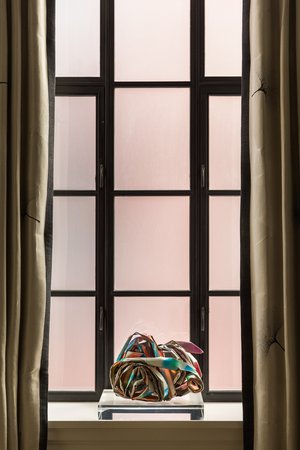 A work by John Chamberlin
A work by John Chamberlin
For our readers who might not be intimately familiar with what an art advisor does, what exactly does your work consist of?
I would say the general goal is to help people build art collections. That’s it, in a nutshell. Of course, that definition changes with every single collector. If you’re somebody who just wants beautiful art in their home, that’s one kind of collector. If you’re young and just starting to get excited about art, that’s another collector. If you’re interested in art as an investment, that’s a whole other kind of collector. There are multiple ways to answer that question, but it’s basically all about assisting people in forming their collections.
And that’s primarily by liaising with galleries and recommending works based on people’s personalities?
All of that. All of that. And it all comes from what I think is longevity in the business and knowing what’s out there.
What are the most important factors when it comes to advising clients on art?
To me, there are two key things about being a great advisor. One is to really, really listen to what the client wants, instead of just directing them. It’s important, because otherwise they’ll inevitably end up unhappy with what they have.
The other key thing is to know what’s out there, and really know it. For me, I’m able to do that because it is an addiction. When I’m home, I’m searching. It’s great, this whole Internet thing—it makes my life so much easier. You can get into one artist, and then get introduced to another. The more you know, the more able you are to advise properly.
Of course, it’s about building relationships. I’ve been in this business for so many years, and I know most of the dealers out there that I care to know. But I’m always getting deeper relationships with some others. That’s how you can really advise. I don’t think it’s wise to just work with two different galleries—you need to work with them all.
 A piece by Chris Martin
A piece by Chris Martin
When you’re first starting to work with a client, what are the questions that you ask them to get a feel for what they’re interested in and how you’re going to proceed with the relationship?
Well, usually I like to meet with them to hang out and talk about other things. I’ve tried to work with interior designers—I get calls from interior designers all the time—and if I don’t know the personality of the client, I just can’t do it. I can see the home and I can see the other things that they like, but if I don’t know the person, I just can’t do it.
Second to that comes their end goal. Is it investment? Is it matching the furniture? Is it getting excited about emerging artists? You can ask all those questions, but I have to say, a lot of times—I’m going to say most times—they do not know what they want. They really don’t. That’s why they hire somebody to advise them. It’s like going to a sommelier and saying, “I’m having this for dinner, and I know that I like white wine. Should it be dry, should it be full-bodied? I don’t know.” I think a lot of people don’t know, so they ask an expert.
I’m really interested in the importance of getting to know a client’s personality before any of this work can start. How important is it to get a feel for their personal style and their overall approach to life before building a collection that they will still like in 10 years?
I think it’s very important. That said, if you see they’re on a track, because of their personality, but you really, really believe something else will enhance their collection and their life and everything around that, then I’ll push for that.
I’ll give you an example. I have a client who is young, in his 30s, who comes from a very prominent family, dresses very conservatively, and has a lot of modern masters passed down to him. I convinced him to buy a KAWS cut-out Snoopy. It wasn’t easy, but I did it because he’s young. One, it’s kind of for the bragging rights. Two, it shows that he has his hands on the pulse of what’s going on today, instead of being stuck in the world of his grandmother. It wasn’t an easy sell, but I think he’s going to be ecstatic with it. And I love that idea of the mix.
So what does he think about it now, after the fact?
This is in the process of being done, so it’s being packed and it will be shipped and hung in his brand new West Village apartment. He’s going to love it—he’s already excited.
 The living room in Joyce Varvatos's family home
The living room in Joyce Varvatos's family home
What are the most interesting—or most challenging—aspects of your work?
First of all, I feel like I’m so lucky to have fallen into this business, because I didn’t wake up saying, “This is my destiny.” I get to look at art all day long. All day. Everyday. Meeting new people is perfectly lovely, but I get to learn something new every single day. Every day. It’s not the same job. Ask my assistant. I had one assistant leave and she tried to do a manual for what we do, and it’s almost impossible because every client is different, every contract is different.
It’s a business of handshakes—in this day and age, it seems impossible that a business can still run like that. Just to give you an example, I just had my current assistant Lauren drop off a Léger for Day & Meyer, for a total stranger to come in and see if they like it. I didn’t have time—I said, “Just drop it off. Call and just make sure they’re going to be there. I don’t even know if we have time for papers.” I’m basically giving my assistant a $200,000 drawing to go drop off somewhere. Or you see something that an advisor sends to you—she’s in London, the painting’s in Florence, and you have to trust that that painting is going to come to you when you send a wire for $80,000.
It’s a business built on trust, and it backfires often. I’ve definitely been burned. If you’re young in the business, you definitely get burned—that’s how you learn how to protect yourself. But the upside is better than the downside.
How do you protect yourself from that kind of thing?
Due diligence. Find out every single thing that you know about this painting, about this person who’s calling you. Nowadays, you can do a lot of research. Find out, make sure that there are no black marks on the dealer you’re working with. Although look what happened with Knoedler—you feel like if you’re going to someone like Knoedler, you’re safe as could be. You can’t always guarantee that you’re not going to be burned—it happens.
 A piece by Richard Prince
A piece by Richard Prince
Let’s talk quickly about your documentary Off The Canvas. What was the impetus behind that project, and what did you discover in the process of making it?
It was a whim. A woman who I met years ago in California—she was working for the Mexican Museum—had changed careers and started making documentaries on health issues. She moved to New York and we got together. Her husband was around, and we just had this brainstorming session. It was created over coffee.
We each brought different things to the table: she brought her camera experience, and I’m the one who approached the women. I guess I was in my mid-30’s when I started that, and it was slightly intimidating, because these are all the grand dames of the art world. Now, of course, I work with them all and have very strong relationships with them. But I was very, very nervous to go in and say, “Hey, remember me from Art in America? How do you feel about being in a documentary?” [Laughs] It’s very funny.
So did that help forge the relationships that you later used in your current business?
Oh, of course. But I had relationships with these women before. Mary Boone was very intimidating for me—now she’s not, I consider her a friend and a colleague. When I first asked her, she said that she’s been approached many times and she’s only doing it because I had asked her, which I thought was so nice. I knew she knew who I was, but that was when I was selling ad space at Art in America. That was the relationship, although a lot of people at that point also knew that it was deeper than me selling ads, because I would borrow galleries to put up my artists’ shows. I always had that spin when I went to galleries.
 Varvatos at Lehman Maupin
Varvatos at Lehman Maupin
This one might be a stretch, but I’m curious—do you see a connection between your work, introducing people to artworks that allow them to express themselves, and what your husband does, which is also concerned with giving people the tools for a different kind of self-expression?
Let me think about this. I suppose a new person going to John’s store who’s not confident yet in their approach to what they wear will take the advice of John’s ad campaigns, and certainly the salespeople—they’ll see what John wears and they’ll copy it. Eventually, they’ll go into John’s store and say, “Oh my god, I saw this jacket and I think it would look great with that shirt.” They’ll put that together for themselves.
When it comes to new collectors, they’re so uneasy, or it’s such new territory, that they will listen to me and buy exactly what I say. And they’re happy. Over time, they learn to be more comfortable walking in these new shoes, and then they can help direct what they want. Now, my clients will call me and say, “I just walked around this art fair, I saw the perfect painting but I want to run it by you first.” That’s one kind of similarity.
I wonder if we could talk a little bit about collecting on a personal level. What kind of work do you and John like to collect?
I’ll start by saying some of the hardest people to collect for are married couples because there are two drastically different personalities involved, especially if they're both not on the same exact track. That does happen, but it’s an anomaly. The two crazy collectors that run around together and go to all the art fairs? They seem to know what they want.
John and I are exactly like that when it comes to furnishing our home and building our new home—we see eye to eye. When it comes to art? Not at all. [Laughs.] It becomes very complicated when you collect. I have a lot of art that’s not in-house, just in storage. John makes fun of some of it.
Can you give an example of something that you disagree on?
Yes. He made fun of it, but now it is going up in our upstate house and he admits that it looks good! It’s a Terence Koh called Flowers for Baudelaire. It’s basically a small, white canvas that has powder on it in a very thick white box, with a blue neon tube on the bottom.
I brought it home and he was like, “What? What is that? What does it mean? Why would you buy that?” I had it up for maybe a few months over my desk—it just did not resonate with him. I took it down, put it in storage. We just finished building our house and we found a perfect spot for it, and he’s perfectly ok with it. Now when I buy things for us, I have to look at it with a different kind of eye, one with the shared aesthetic with John.
 The kitchen and sitting area, with a painting from the Bruce High Quality Foundation
The kitchen and sitting area, with a painting from the Bruce High Quality Foundation
Last question: what do you think your collection says about you, your style, and your personality?
It’s eclectic. I have aspirations for a much better collection, a much bigger collection, because some of my favorites are truly unobtainable. I’m on the search for younger artists who can evoke that same emotion with me. It’s a dream to own a Rothko and a Francis Bacon, so it’s fun to try and find the younger artist who can do something like that.
With John, because I have to collect for our homes, I look for things that are not loud, that are relatively monochromatic or black and white, like rock and roll photography. [Laughs.] We have an awful lot of that. I built a dream collection for my sister—I always say that if my sister and I lived together, we’d have the best collection ever, for us. She has a lot more leeway with color, like this glitter Chris Martin that I found for her. I can’t imagine John going for it. There’s lots of color: the Ross Bleckner, the Richard Prince. I think it is so cool, but I can see John saying, “I just don’t understand why a book in a frame that he did not paint is $300,000.” [Laughs.]
It’s hard to answer the question of what my art says about me. Here’s another way to answer it: I can appreciate so much more art than I actually collect.











